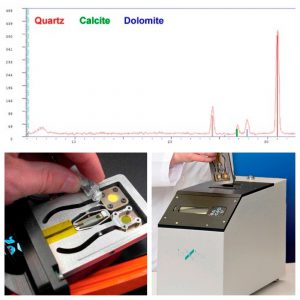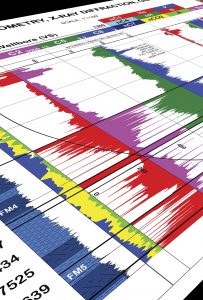Laboratory and Wellsite XRD

FGS uses a portable desktop BTX-II™ powder X-ray diffraction (XRD) machine that is equal to a traditional lab-based XRD in quality and function. The BTX-II™ is the same XRD technology NASA currently uses on the Curiosity Rover now exploring the geology of Mars (NASA PDF).
Wellsite XRD
The resulting XRD data is confirmed with the International Center Diffraction Data (ICDD) PDF II database falling within an error of 0.5%. Pre-defined mineral species are set specific to geology of the region based upon our research of a given area or basin. You can feel confident knowing we do our homework even before your first sample is analyzed.
The difference in analysis between the traditional lab-based X-ray diffractor and the BTX-II™ is the technique the machine uses to analyze an aliquot of rock sample. BTX-II™analyzes a 10 – 15 mg of powdered sieved sample convected within an integrated sample vibration chamber. This vibration chamber provides all orientations of the crystal structure to the instrument optics, resulting in a XRD pattern nearly free of problematic preferred orientation effects. Also, energy discrimination by the X-ray detector eliminates any fluorescence, scatter and background noise.
Laboratory XRD
Our main office based in Colorado is capable of conducting laboratory based X-ray diffraction (XRD) on samples from historical wells or as a post-well analysis to aid in completions decisions. We use the same BTX-II™ desktop machine. We are compliant with the State of Colorado ICC 93-12 and have a normal turnaround of 5-10 business days. Results are posted in easy to understand and use digital formats for geologists and engineers to utilize in their well completions process.


